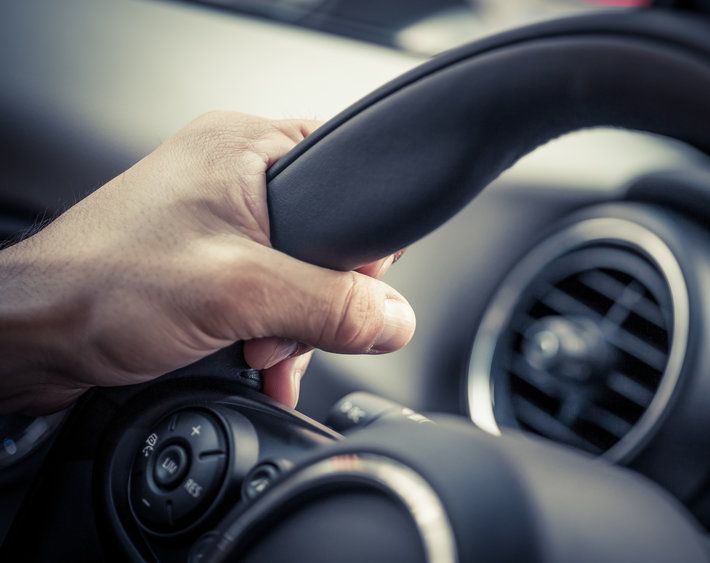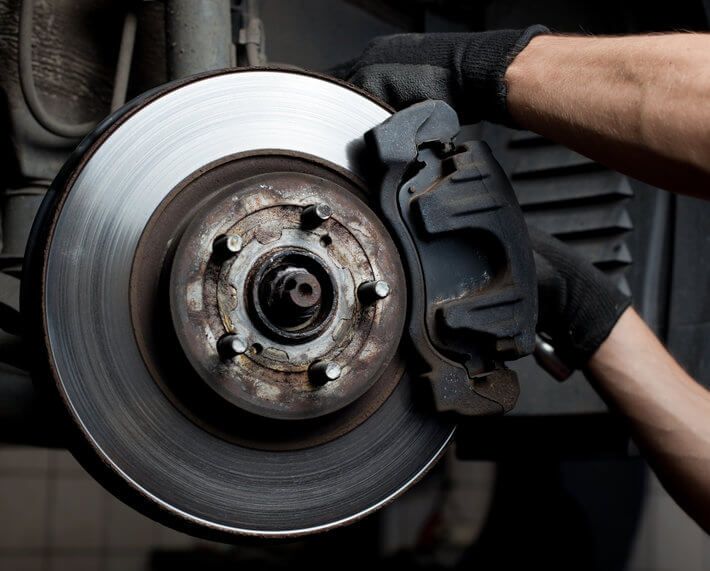Sometimes all you can do is cross your fingers and hope for the best, like when playing the lottery or going on a blind date. But when the brake light illuminates on your dashboard? It's not one of those moments. Ignoring this dashboard light could prove to be downright dangerous. After all, the purpose of a warning light is to alert you to an issue you might not notice otherwise. Instead of hoping it will go away with time, learn why this important dashboard light comes on and how to handle it.
Alert #1: The parking brake is engaged.
When your parking brake is activated, your brake light will also be on. In many cases, the light looks like a red or yellow circle with the letter "P" or an exclamation mark "!" in the middle. Check your owner's manual for the symbol and instructions specific to your vehicle. Do not continue to drive when the parking brake is engaged, as you can damage the brake pads and rotors. After you release the parking brake, this warning light should go off. If it doesn’t, the brake may not be fully released or there may be something else going on...
Alert #2: The brake fluid is low.
For many vehicles, a yellow circle with an exclamation mark "!" in the middle signals low brake fluid. While the light is yellow, the brake system may still have enough fluid to function. And if it turns red? See a professional as soon as possible. A red light that flashes on and off could signal low/almost empty brake fluid, but also a serious issue with the brake's hydraulic system. If the light comes on and stays on, you could end up with a potentially catastrophic (and costly) brake failure. An expert technician can identify the cause and determine what your braking system needs, whether it's a brake fluid flush or brake repair.
Alert #3: There's a problem with the anti-lock brake system.
Many modern vehicles are equipped with anti-lock brake systems that help prevent the wheels from locking up and tires from losing traction in slippery situations. This system has a separate warning light that typically says, "ABS," but may vary depending on your vehicle. There are a variety of reasons this light might come on, from an electrical malfunction to a broken or dirty wheel speed sensor. When the speed sensor isn't working properly, the anti-lock braking system will not work properly. A technician can perform a diagnostic test to determine what's causing the ABS warning light to come on and find a solution.
Alert #4: Your brake light bulbs need to be replaced.
Some vehicles will cue the brake warning light on the dashboard if the rear brake lights are dim or burned out. Helpful, right? To check for this problem, have a friend stand where they can see the back of your car as you press down on the brake pedal. If both bright red brake lights aren’t coming on, you’ve identified the problem! Get your brake light bulbs replaced and the warning light should go off.
Psst! Your brake light isn't the only dashboard light you want to keep an eye out for. Let these important dashboard lights linger for long and you could wind up stranded or stuck with major repairs down the road.
Whether you're in need of a parking brake check or a brake fluid flush, Firestone Complete Auto Care is your go-to brake repair and service center. We offer free brake inspections. Simply drop by or schedule an appointment online for a time that's most convenient for you! Visit a Firestone Complete Auto Care near you for a dashboard light diagnosis, free brake inspection, and brake repair, if needed. When it comes to solving your brake problems, we don’t take breaks!



